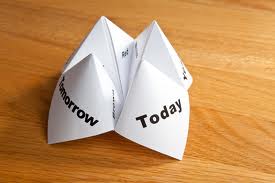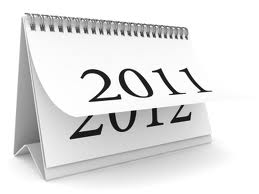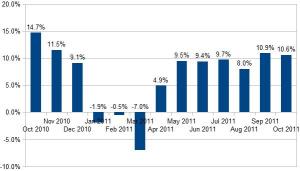 Don’t look now, but we are seven weeks away from drinking champagne and celebrating the end of 2013 and the start of a Happy New Year 2014. It is this time of the year when non-profit organizations are super busy. Many of you are closing out your fiscal year, and almost every non-profit with a pulse is executing its year-end giving strategy.
Don’t look now, but we are seven weeks away from drinking champagne and celebrating the end of 2013 and the start of a Happy New Year 2014. It is this time of the year when non-profit organizations are super busy. Many of you are closing out your fiscal year, and almost every non-profit with a pulse is executing its year-end giving strategy.
According to a survey by Charity Navigator, respondents reported that they expect to raise 40% of their annual revenue budget between Thanksgiving and New Years.
Holy Cow! Year-end giving is a big deal for many non-profit organizations, which is why I’m dedicating today’s post to just a few giving strategies I see being employed or talked about by my friends.
Traditional year-end appeals letter
There are many different “schools of thought” on how to craft the perfect year-end appeals letter. I’ve seen all of my favorite bloggers weigh-in on this subject. The funny thing is that each and every one of them have a slightly different take on the same subject.
- Long letter vs. short letter
- The importance of cross-channel promotion or not
- Send the letter early or closer to Thanksgiving
 I just finished helping a client with their year-end mail appeal. The executive director called on Friday to report the letters were delivered to the post office and we both did a little happy dance. The next thing on his year-end fundraising task list is preparing for the phone-a-thon follow-up the week of Thanksgiving.
I just finished helping a client with their year-end mail appeal. The executive director called on Friday to report the letters were delivered to the post office and we both did a little happy dance. The next thing on his year-end fundraising task list is preparing for the phone-a-thon follow-up the week of Thanksgiving.
If you are like most non-profit organizations, you are doing something traditional like sending a letter. Hopefully, you’ve already sent it or are very close to doing so, but here are just a few thoughts of my own on this very popular subject:
- The letter must be emotional and pull at heart-strings
- The letter must tell a story about impact and not focus on your agency’s needs
- A matching gift is a tremendous incentive that sets you apart from lots and lots of other appeals
- Go light on the stats and data . . . let the story be the feature and sprinkle outcomes data into your story sparingly
- Don’t be overly fixated on restricting your letter to one page . . . tell your story
- Use lots of white space, pictures and graphics
- Keep in mind how readers read . . . write your letter accordingly (e.g. personalized salutation, ask for a specific contribution in the first paragraph, influential signature, catchy post script)
- You need to design a great outer envelope . . . entice people to open the envelope and read your request or your awesome letter is worthless (e.g. handwritten names and addresses on the outside envelope)
- Follow-up . . . organize your board members in a phone-a-thon and send a follow-up postcard or another appeal before New Years Eve
If you don’t like my suggestions or are looking for more advice, here are a few additional links to bloggers who are amazing:
- Fired Up Fundraising: “What can make or break your year-end fundraising appeal?“
- Beth’s Blog: “On appealing year end appeals & being pitch-erific“
- The Fundraising Coach: “The secret behind year-end fundraising fall appeals“
 Holiday shopping appeals
Holiday shopping appeals
Perhaps you didn’t notice, but there are lots and lots of people spending lots and lots of money on gifts for family and friends. Something about “’tis the season“.
With this is mind, there is a big year-end giving trend that has materialized over the last decade or so where non-profit organizations try to tie their year-end appeal to those shopping habits. It is typically rooted in cause-related marketing efforts as retails try to differentiate themselves from their competitors, seize the halo effect and drive foot traffic through their doors using charitable goodwill.
I can almost hear those cashiers asking, “Would you like to donate a dollar to . . .”
A good friend of mind and fellow blogger — Dani Robbins — just informed me via Google+ that Amazon.com has a new charitable giving program called AmazonSmile. In a nutshell, Amazon shoppers will be able to donate 0.5% of their purchase to a charity of their choosing (as long as that charity can be found on Guidestar AND is registered with Amazon).
Is your agency participating in AmazonSmile? Click here is you want to learn more.
 #GivingTuesday
#GivingTuesday
What?!? You haven’t heard of #GivingTuesday?
I guess you get a pass because last year was the first time the non-profit sector attempted to get this “national day of giving” off of the ground.
In a nutshell, there were 2,500 giving partners located in all 50 states. More than 50 million people worldwide helped promote this day by posting, tweeting and generally talking about it on social media. Both Blackbaud and DonorPerfect reported an increase in giving resulting from these efforts.
Will your non-profit organization participate in the second annual #GivingTuesday this year? If so, then . . .
- Mark your calendars for Tuesday, December 3, 2013
- Start developing your online giving strategies to promote this opportunity to your donors
- Get registered as an official partner
For more info, click here to read the #GivingTuesday FAQ page.
You might also want to do a little research on #GivingTuesday best practices. Hubspot published a great post titled “12 Ways to Amplify Your Giving Tuesday Campaign” that you may want to check out.
What does the homestretch look like for your non-profit organization’s fundraising efforts? Please use the comment box below to share. Why? Because we can all learn from each other, and it is the season of giving, of course! 😉
Here’s to your health!
Erik Anderson
Founder & President, The Healthy Non-Profit LLC
www.thehealthynonprofit.com
erik@thehealthynonprofit.com
http://twitter.com/#!/eanderson847
http://www.facebook.com/eanderson847
http://www.linkedin.com/in/erikanderson847

 Jeff Bezos has been on my mind lately. Of course, he is the 49-year-old owner of Amazon.com, and this internet pioneer recently purchased one of the iconic old media newspapers — The Washington Post — for $250 million. It was no more than a few days after this announcement that I was talking to a non-profit board volunteer about fundraising when I was reminded of this famous Jeff Bazos quotation: “A company shouldn’t get addicted to being shiny, because shiny doesn’t last.”
Jeff Bezos has been on my mind lately. Of course, he is the 49-year-old owner of Amazon.com, and this internet pioneer recently purchased one of the iconic old media newspapers — The Washington Post — for $250 million. It was no more than a few days after this announcement that I was talking to a non-profit board volunteer about fundraising when I was reminded of this famous Jeff Bazos quotation: “A company shouldn’t get addicted to being shiny, because shiny doesn’t last.” I am a huge proponent of using technology and integrating it into your non-profit organization’s fundraising program, but it shouldn’t be introduced in a way that undercuts the other best practices embedded in your resource development plan.
I am a huge proponent of using technology and integrating it into your non-profit organization’s fundraising program, but it shouldn’t be introduced in a way that undercuts the other best practices embedded in your resource development plan.



